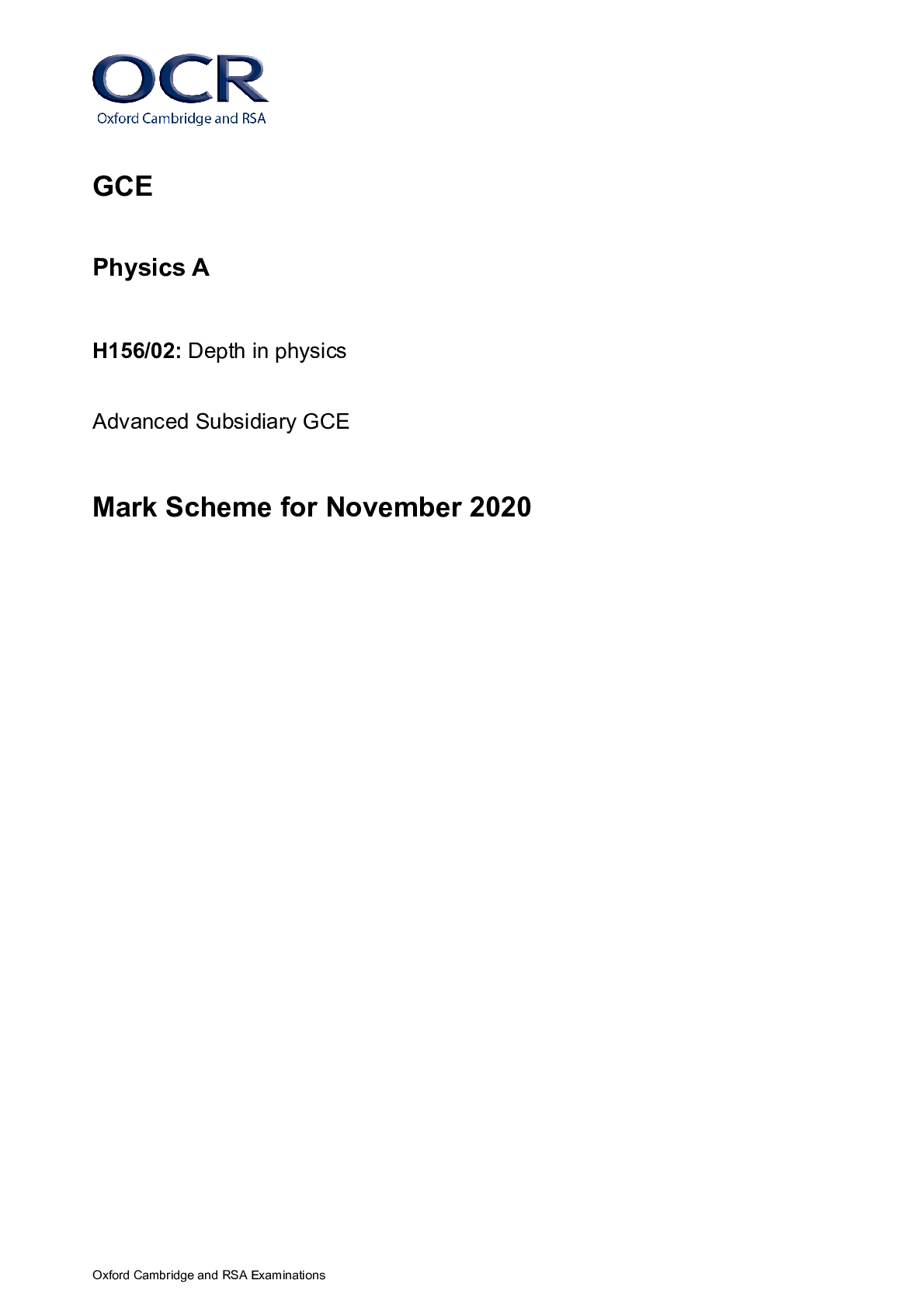OCR (Oxford Cambridge and RSA) is a leading UK awarding body, providing a wide range of
qualifications to meet the needs of candidates of all ages and abilities. OCR qualifications
include AS/A Levels, Diplomas, GCSEs, Cambridge Nationals, Cambridge Technicals,
Functional Skills, Key Skills, Entry Level qualifications, NVQs and vocational qualifications in
areas such as IT, business, languages, teaching/training, administration and secretarial skills.
It is also responsible for developing new specifications to meet national requirements and the
needs of students and teachers. OCR is a not-for-profit organisation; any surplus made is
invested back into the establishment to help towards the development of qualifications and
support, which keep pace with the changing needs of today’s society.
This mark scheme is published as an aid to teachers and students, to indicate the requirements
of the examination. It shows the basis on which marks were awarded by examiners. It does not
indicate the details of the discussions which took place at an examiners’ meeting before marking
commenced.
All examiners are instructed that alternative correct answers and unexpected approaches in
candidates’ scripts must be given marks that fairly reflect the relevant knowledge and skills
demonstrated.
Mark schemes should be read in conjunction with the published question papers and the report
on the examination.
© OCR 2020
H156/02 Mark Scheme November 2020
2
Here are the subject specific instructions for this question paper.
CATEGORISATION OF MARKS
The marking schemes categorise marks on the MACB scheme.
M marks These are method marks upon which A-marks (accuracy marks) later depend. For an M-mark to be scored, the point to which
it refers must be seen in the candidate’s answers. If a candidate fails to score a particular M-mark, then none of the
dependent A-marks can be scored.
A marks These are accuracy or answer marks, which either depend on an M-mark, or allow a C-mark to be scored.
C marks These are compensatory method marks which can be scored even if the points to which they refer are not written down by the
candidate, providing subsequent working gives evidence that they must have known it. For example, if an equation carries a
C-mark and the candidate does not write down the actual equation but does correct working which shows the candidate knew
the equation, then the C-mark is given.
B marks These are awarded as independent marks, which do not depend on other marks. For a B-mark to be scored, the point to
which it refers must be seen specifically in the candidate’s answers.
Read More

